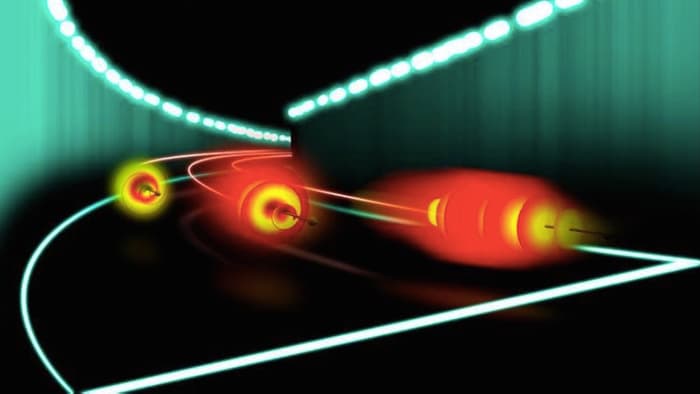
One of the perennial challenges of telecommunications has been how to cram more information into any given transmission line. No sooner was telegraphy invented than engineers started working on multiplexing to carry more than one message at a time. Over the years, messages ranging from the trivial to the tremendous have been crammed into coaxial cables, microwave conduits, fiber optics, and along laser beams.
Twisted light is based on the Orbital Angular Momentum of light or OAM, which allows a beam of a particular color – or wavelength – to be twisted into a corkscrew shape to dramatically increase the amount of information that can be transmitted. This is possible because, instead of varying the number of photons emitted, the information is encoded by switching between light's two polarization states. Since each twist can encode a different value, and the number of twists are theoretically infinite, much more information can be transmitted using less light.
Unlike conventional laser signals, which are essentially on/off patterns, twisted light has a tremendous potential for quantum-based communication and computing, not only for its ability to carry immense amounts of data, but also for energy savings and more secure encryption. The trouble is that physicists are working on a level that requires such precision that an unexpected factor can have huge implications.
In this case, the Ottawa team discovered that twisted light travels slower than the speed of light, which is 299,792,458 meters per second (186,282.4 miles per second) in a vacuum. In the case of twisted light, it travels through a vacuum 0.1 percent slower than regular light.
According to the team, the phenomenon first became apparent when they compared Gaussian laser light and light with 10 twists.
"We realized that the two beams didn't arrive at the detector at the same time," says Karimi. "The twisted light was slower, which was surprising until we realized that the twists make the beam tilt slightly as it propagates. This tilt means that the twisted light beam doesn't take the straightest, and thus fastest, path between two points."
This time delay was so short that it only amounted to tenths of a femtosecond or quadrillionths of a second. In order to properly measure this, the team needed to use a method for studying ultra-short laser pulses called Frequency-Resolved Optical Gating (FROG).
The problem was that the usual way to time an event like a laser pulse is to compare it to something of shorter duration, like using a strobe light to photograph a popping balloon. However, laser pulses are about as short as something can get. Sidestepping a lot of mathematics, FROG works by splitting a laser pulse in two and passing one through an optical medium to form an "auto-spectrogram," which allows the pulse to essentially compare its speed against itself.
Using FROG, the team discovered that in comparison to Gaussian laser beams, the twisted beams were delayed by up to 23 femtoseconds. According to the team, the ability to slow down light by altering its structure implies that it may also be possible to speed it up by around one femtosecond faster than the speed of light in a vacuum. In the meantime, the measurement of slow twisted light has major implications for the development of quantum communications.
"Anyone who wants to use twisted light for quantum communication should be aware of this effect," says Karimi. "If they don't compensate for the slow-light effect, information coded on twisted light might not arrive in the right order. Propagation speeds can significantly affect many protocols related to quantum communication."

 Previous page
Previous page Back to top
Back to top







